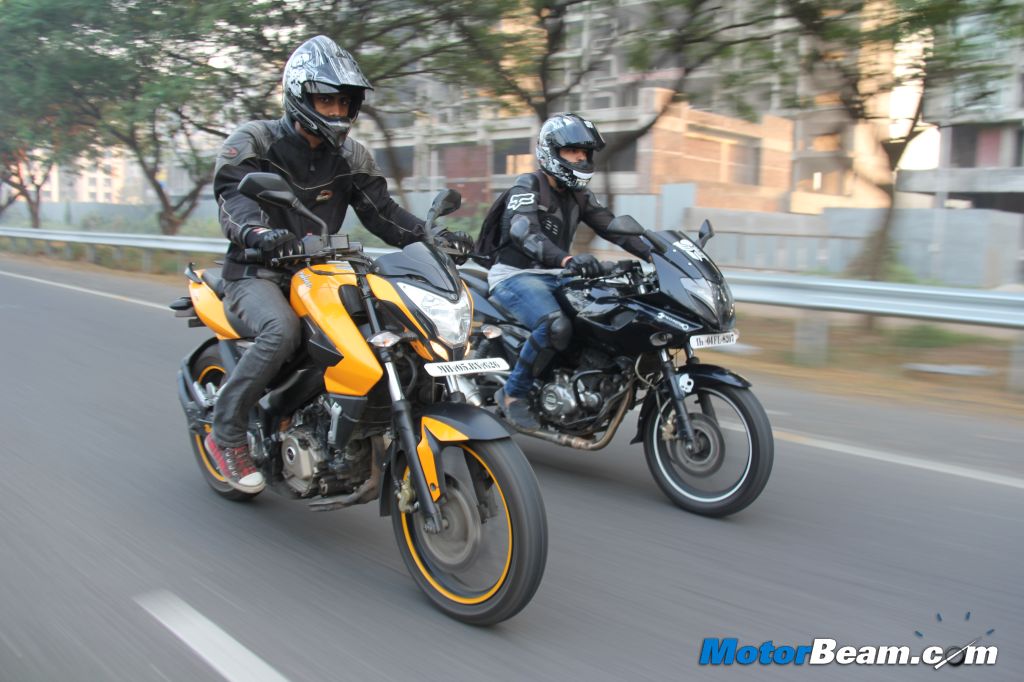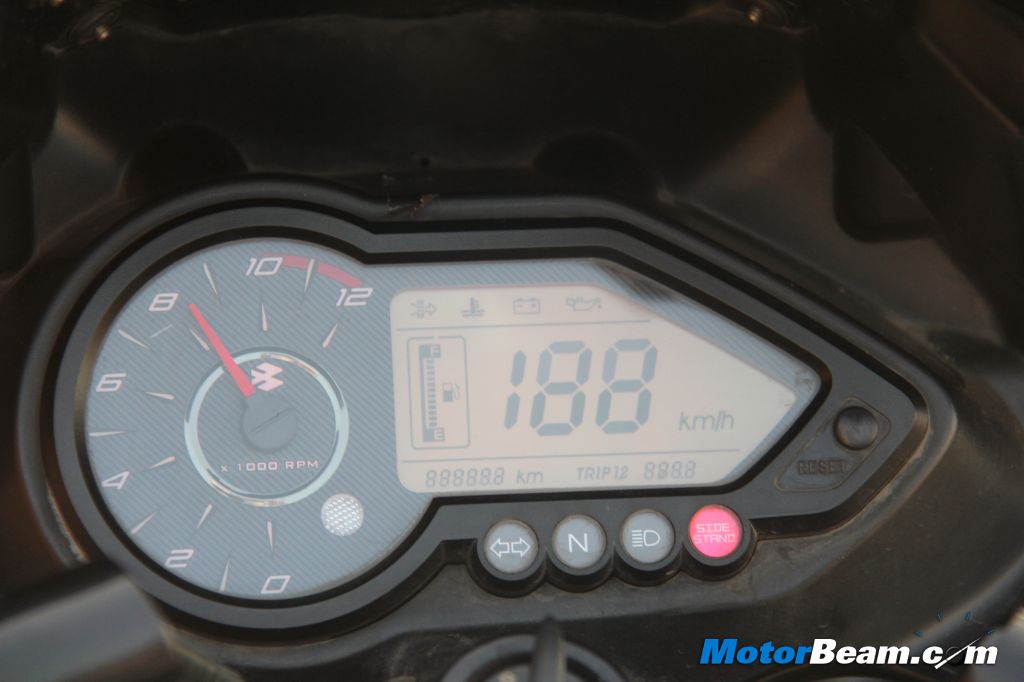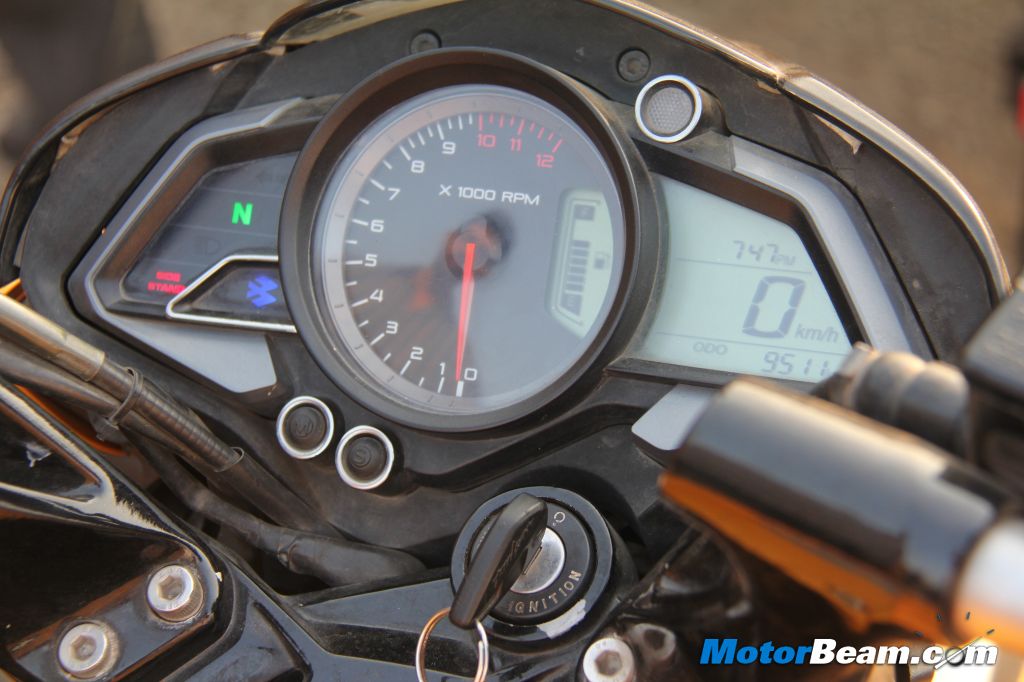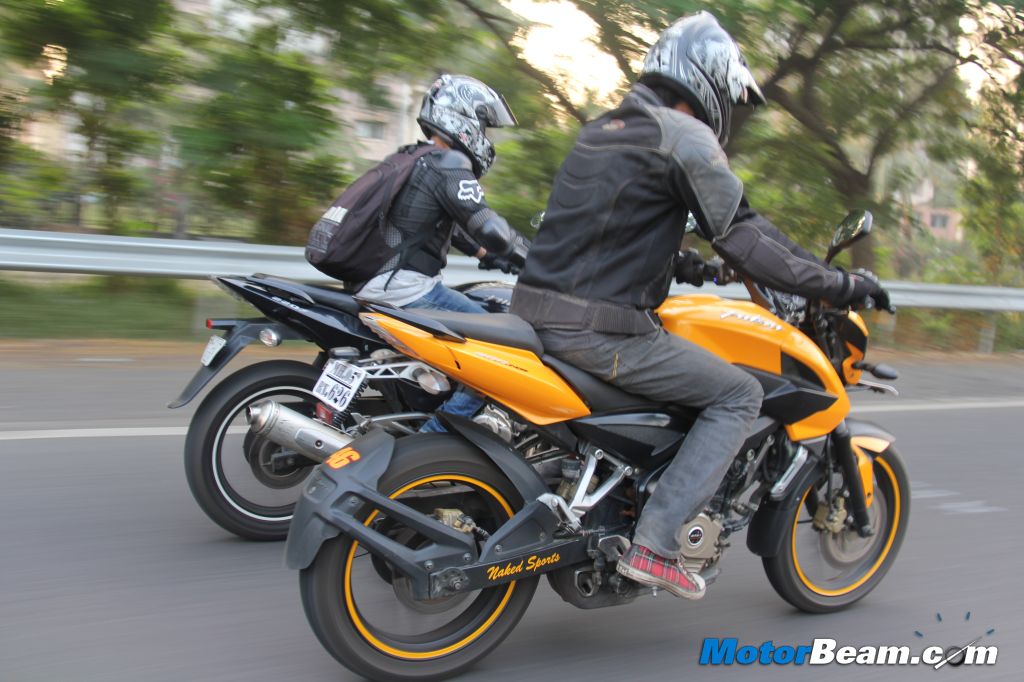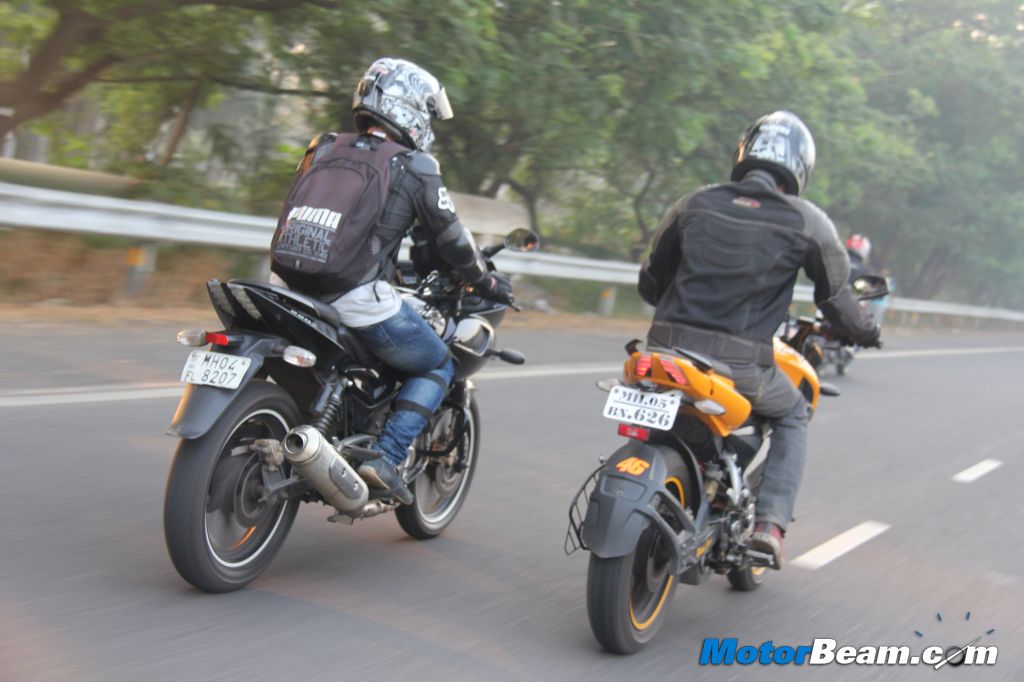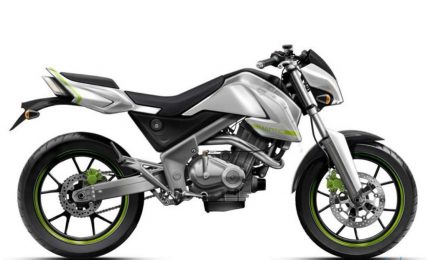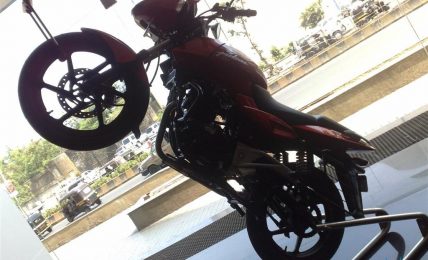Shootout – Pulsar 220 vs Pulsar 200 NS
The Pulsar 200 NS is a clear generation ahead of the Pulsar 220, in every possible way.
The second generation of the Bajaj Pulsar was highly awaited, being delayed time and again. But when it did come out, it immediately became the talk of the town. However people soon started comparing the Pulsar 220 and Pulsar 200 NS, making a big deal of the 20cc advantage. While the Pulsar 220 does have a displacement and claimed top speed advantage, out on the roads, things are very different. We take both these motorcycles for a head to head shootout and put to rest the inherent confusion between the top end Pulsar siblings. No prizes for guessing which is the superior bike of the two and which one you should pick.
Styling – Both bikes being Pulsars, automatically mean that they have aggressive lines and huge muscular chiseled tanks which are the main highlight in both these machines. The tank of the Pulsar 200N S is on the taller and sharper side which is an inspiration from the last generation Pulsar 200 DTSi and bikini fairing which undoubtedly comes from the Pulsar 135 LS but its bigger in size. While the headlight, no doubt is very Benelli, the rear is quirky to our taste. The Pulsar 220 also has muscular design over all, with the muscular tank on the lower side and rest being attached to the vertical designed fairing. The all black styling gives it the hunked down look which is aided by the lower height than the Pulsar 200 NS.
Instrument Cluster and Switch Gear – Both of these bikes get analog tachometers and digital speedometers and both are loaded with a host of features. The Pulsar 220 gets a warning for clogged air filter and high oil temperature while the Pulsar 200 NS gets coolant temperature indicator, a clock and service due indicator. Both the bikes get low battery and side stand indicator. Switch gear on both bikes feels great to use. It’s the 200 NS which feels a notch above the 220. The 200 NS skips on auto cancelling turn indicator when compared to the Pulsar 220.
Ergonomics – The 200 NS and 220 are extremely comfortable motorcycles for commuting and touring with a comfortable riding position and mature cushioning of the seats. The RVMs on the Pulsar 220 are of no use unless the rider has a slim build. The RVMs on the 200 NS are great and offer wide view of what is behind. The Pulsar 220’s projector setup offers much better illumination and light throw, while the 200 NS is just about average in comparison.
[youtube:http://www.youtube.com/watch?v=YfpUjsxvqB4 540 375]
Performance and Gearbox – The Pulsar 220 is powered by a SOHC, 2-valve, oil-cooled, DTSi engine producing 21.04 PS of power at 8500 RPM and 19.2 Nm of torque at 7000 RPM, which is mated to a 5-speed gearbox. The motor has acceptable NVH levels and is decently refined. While the 200 NS is powered by a 4-valve, SOHC, liquid-cooled, triple spark engine producing 23.5 PS of power at 9500 RPM and 18.3 Nm of torque at 8000 RPM, which is mated to a 6-speed gearbox. The 200cc motor is leagues ahead in terms of refinement and NVH levels when compared to the Pulsar 220. The motor is smooth and extremely rev friendly.
Both these Pulsars have good low down torque which aids drive-ability in the city. The 6-speed gearbox on the 200 NS is slick and is easy to use, while the gearbox on the 220 is decently refined but is clunky and moody at times. But when it comes to performance and showing their might, both these bikes are fast in a straight line. Though the 200 NS is faster than the 220 in every possible aspect, the 220 doesn’t give up the crown easily, 0-60 km/hr times are in the same ball park, after which the Pulsar 200 NS takes a lead by a huge margin and stays ahead till the very end.
Riding Dynamics – High performance bikes need good brakes to stop at will. Here too the Pulsar 200 NS scores, with petal discs on both ends and a bigger 2-pot, floating caliper at the front, which ensures super sharp confidence inspiring braking thanks to a lighter kerb weight and compact dimensions than the Pulsar 220. The Pulsar 220 also has Bybre made calipers (smaller then 200 NS) at the front and rear but with a steel braided line at the front, speeds shedding is fast on the Pulsar 220 as well but the 200 NS is far superior. The 200 NS is truly next generation motorcycle from Bajaj.
With a perimeter frame, gas-charged monoshock and low profile tyres, the Pulsar 200 NS is dynamically the best Pulsar. Cornering is confidence inspiring and one can really push the Pulsar to the very limit and still remain poised and balanced. If only the 200 NS had better tyres (read softer compound tyres), the handling would been more confidence inspiring. The Pulsar 220 on the other hand feels wobbly due to softer suspension setup, the chassis isn’t stiff enough to inspire confidence. But it takes sweepers at high speeds quite well; it’s dynamically mediocre, but nowhere near as energetic as the 200 NS, which has 50:50 weight balance.
Verdict – Clearly the Pulsar 200 NS is a far superior motorcycle than the Pulsar 220. While the 220 is a splendid motorcycle, the 200 NS is just better in almost every regard. Not only does the P200 NS handle better than the P220, its faster and has better brakes as well. Quality wise too, the 200 NS is an improvement over the 220 and the engine doesn’t vibrate as much as the 220’s. With the Pulsar 220 retailing for Rs. 96,500/- and the Pulsar 200 NS priced at Rs. 1.01 lakhs, you get much more bike for the slightly higher amount you pay for the Pulsar 200 NS. Thus the 200 NS is the Pulsar to buy if performance and handling is your main agenda.
The price difference between the Pulsar 220 and Pulsar 200 NS is less than Rs. 5000/-, which makes the 200 NS an absolute bargain.
Further Reading –
Bajaj Pulsar 200 NS Review
Pulsar 200 NS vs KTM Duke 200
Yamaha R15 V2 vs Honda CBR150R


